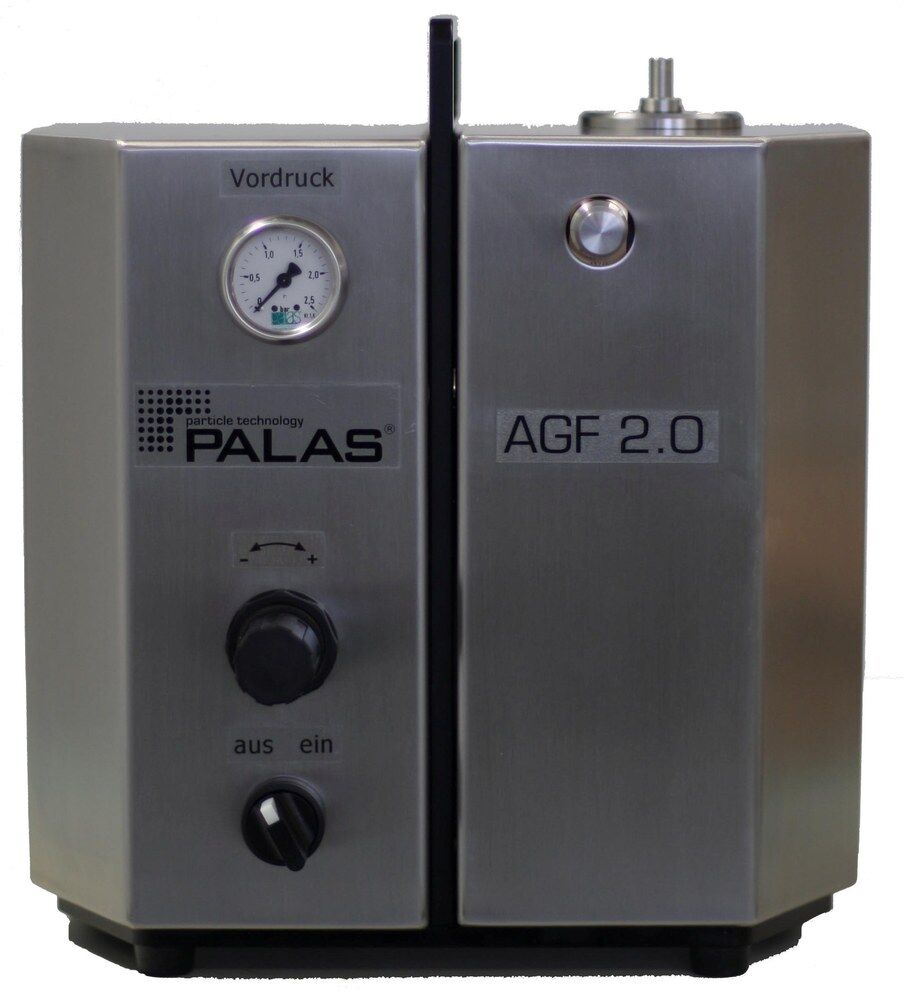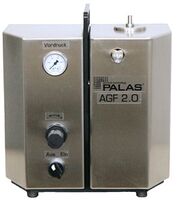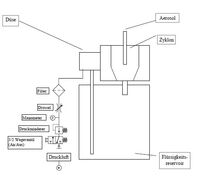- Exact adjustment of the operating parameters
- Number concentration (CN) can be varied by the factor 10
- Particle size distribution remains virtually constant, if CN is modified
- Number distribution maximum is within the MPPS range
- Virtually no power losses
- Optimal concentration, no coagulation losses
- Resistant to numerous acids, bases, and solvents
- Robust design, stainless steel housing
- Easy to operate
- As opposed to the collision method, the AGF 2.0 does not generate any particles > 2 µm thanks to its cyclone.
- Due to the fact that the AGF generates virtually no droplets > 2 µm, the consumption of materials is very low, thus ensuring a long dosing time.
- With the use of DEHS the mean particle size is within the MPPS range for HEPA/ULPA filters
This website uses cookies so that we can provide you with the best user experience possible. Cookie information is stored in your browser and performs functions such as recognising you when you return to our website and helping our team to understand which sections of the website you find most interesting and useful.





